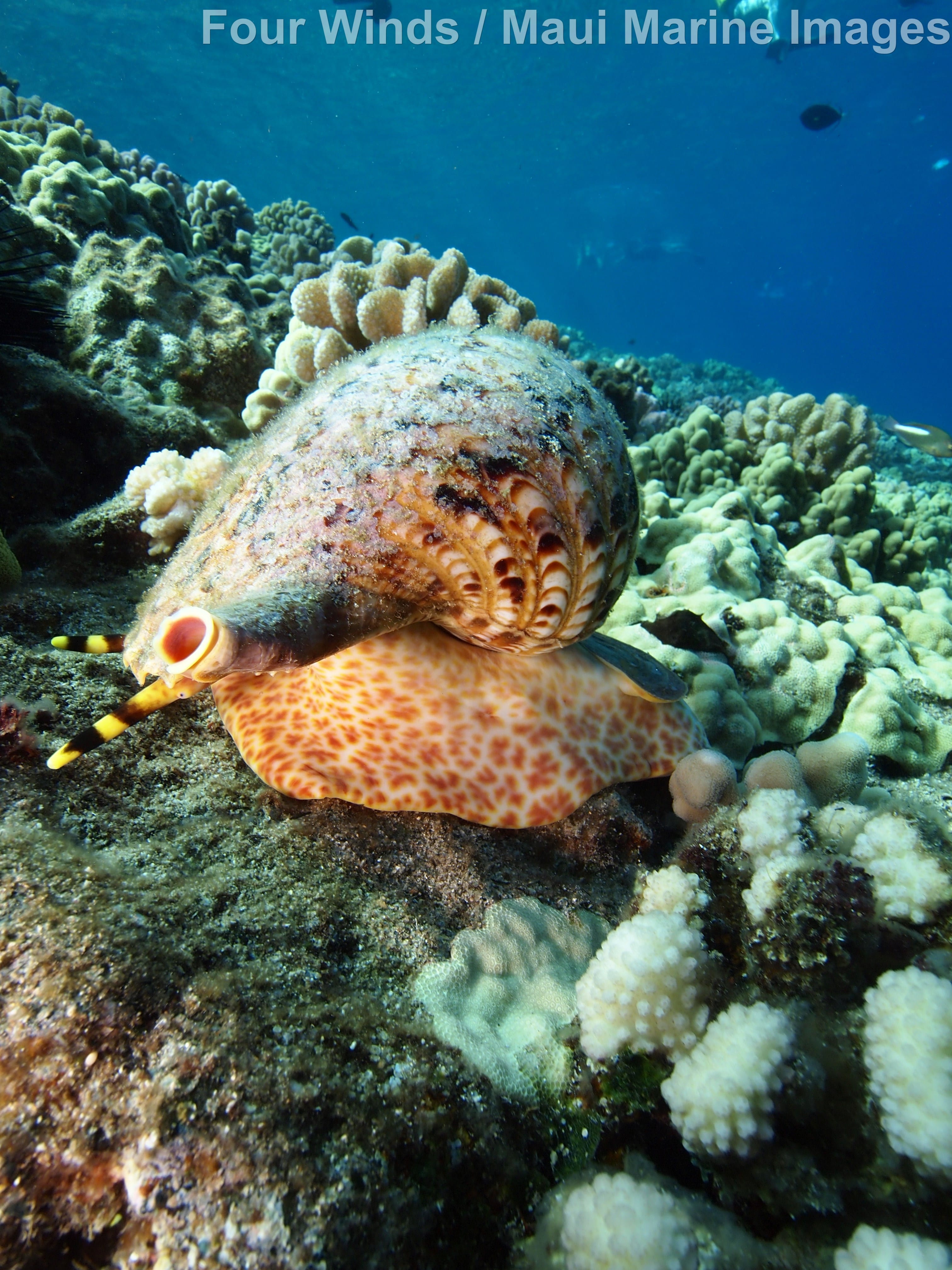The Triton’s Trumpet: Hawaiian Conch Shells
The Conch Shell: What It’s About
 The practice of blowing the conch shell, or “p’u”, dates back to the ancient past and continues in many present-day traditions in Hawai’i.
The practice of blowing the conch shell, or “p’u”, dates back to the ancient past and continues in many present-day traditions in Hawai’i.
The popularity of the Triton’s trumpet is due as much to its beauty and size as to its ability to make sound when the tip of the shell’s pointed spire is removed or filed down (known as “blowing the p’u or conch shell”). The ribbed, spiral shell’s spotted inhabitant is the largest known snail in Hawaiian waters.
In generations past, special shells were cherished and handed down as a type of family heirloom. Today, it is not uncommon to find shops and web sites selling the Triton’s trumpet shell, the most commonly used type of p’u, to collectors and visitors who may have little idea of the shell’s cultural importance and even less knowledge of the animal that produced and lived inside this shell.
When allowed to mature undisturbed, they can reach 20 inches in length, but Tritons of this impressive size have become rare in Hawaiian waters and elsewhere.
Smaller ones can sometimes be found in relatively shallow waters at average depths of 9 to 75 feet in coral-rich habitat or around volcanic rock. Not known to stray far from their home bases and are presumed to live for many years. Longevity of Tritons likely depends upon availability of food, water conditions and harvesting practices.
As with most snails, the Triton’s trumpet snail possesses a head, eyes and tentacles. Its mouth is located at the end of a long tube or proboscis, a trunk-like feeding organ.
It can crawl about using its broad powerful “foot.” The creature’s beautiful shell protects its soft body and internal organs.
Tritons locate prey by scent and tend to hunt at night, preying on starfish and urchins, most notably the cushion star, red pencil urchin and crown of thorns sea star. The Triton is the sea star’s main predator and plays a unique role in keeping the coral reef safe from it.
The Triton trumpet’s name derives from the Greek god, Triton, who is often pictured blowing a trumpet shell horn to calm rough seas during a tempest.
Should you find yourself lucky enough to get a glimpse of a Triton’s trumpet while on a Maui snorkel tour, always enjoy with your eyes only … leave them where they live. Every living creature plays an important role in maintaining the delicate balance of reefs that may already be severely impacted by a host of causes.
